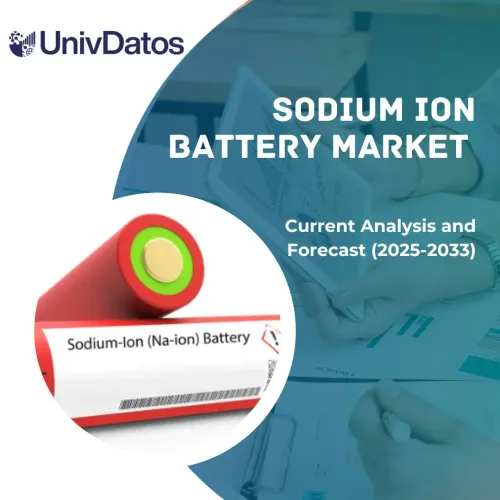- Home
- About Us
- Industry
- Services
- Reading
- Contact Us
Hydraulic Fracturing Market: Current Analysis and Forecast (2021-2027)
Emphasis on Well Type (Horizontal, Vertical); Technology (Plug & Perf, Sliding Sleeve); Application (Shale Gas, Tight Gas, Tight Oil); Location (Onshore wells, Offshore wells); Region/Country

The global hydraulic fracturing market was stood around US$30 billion in 2020 and is expected to showcase robust growth of above 8% during the forecast period. Unconventional reservoirs have low permeability which requires high intervention process in order to optimize oil production, thus making hydraulic fracturing a major operation required to produce oil and gas. According to data the published by The Department of Natural Resources of Canada, permeability of tight reservoirs ranges from 0.1 to 0.001 md, and that of shale reservoirs which is even less permeable ranges from 0.001 to 0.0001 md and that of conventional reservoir ranges from 10 to 100 md which is more than unconventional reservoir. As a result, the average permeability of tight and shale reservoirs is usually too small to allow commercial production unless hydraulic fracturing technique is used. Moreover, with increasing global demand of oil and gas due to growing industrialization and increasing population the global hydraulic fracturing market is expected to grow considerable rate in the forecasted period. For instance, production of shale gas in U.S., grew to 835 BCF in 2019 as compared to 720 BCF in 2018.
During the Covid-19 pandemic in the early 2020, majority of the countries and region witnessed a country wide lockdown. This has impacted the overall demand for oil and gas. According to U.S. Energy Information Administration, globally a decline of almost 9% in the overall demand of oil and gas was witnessed in 2020 for the first time since the global recession of 2009. Therefore, by lockdown demand for oil and gas reduced thereby lessening the production for the same and resulting to reduced hydraulic fracturing operations.
Insights Presented in the Report
“Amongst Well Type, horizontal well category held prominent market share in 2020.”
Based on well type, the market is bifurcated into horizontal and vertical wells. Of both, horizontal well held prominent market share and is expected to retain its position during the forecast period therefore by developing a single horizontal well whole oilfield can be produce in case of vertical wells, multiple wells are required to extract oil from the field.
“Amongst Technology, plug & perf technology held considerable market share in 2020.”
Based on technology, the market is bifurcated into plug & perf and sliding sleeve. Currently, plug & perf technology held the significant market share in 2020.
“Amongst Application, Shale Gas held significant market share in 2020.”
Based on application, the market is bifurcated into shale gas, tight gas, tight oil. Currently, shale gas held the considerable market share and is increasing at an influential growth rate which is mainly due to large number of exploration and production in US. For instance, as on Dec 2019, 353.1 TCF of proven reserves of shale gas were noted in U.S.
“Amongst Location, Onshore wells held remarkable market share in 2020.”
Based on application, the market is segmented into Onshore wells and Offshore wells. In 2020, a total of nearly 55,000 wells were drilled, out of which approximately 2,250 wells were offshore wells and rest were onshore wells. Owing to this there are large number of onshore wells as compared to offshore wells.
“North America represents as the largest markets in the Global Hydraulic Fracturing Market.”
For a better understanding of the market adoption, report provide detailed analysis for major region and countries including North America (US, Canada, Rest of North America), Europe (Germany, UK, Russia, France, Spain, Rest of Europe), Asia-Pacific (China, Japan, India, Australia, Rest of APAC), MEA (Iran, Iraq, Saudi Arabia, UAE, Kuwait, Rest of MEA), and Rest of World. Over the years, with advancements in technologies to extract shale oil and gas, exploration and production activities of unconventional reserves specifically in North America have increased significantly. For instance, in 2020 North America’s proven natural gas reserves amounted to 536.8 TCF. In addition, due to research and development which is being carried out since long time has led to advancement in technology for hydraulic fracturing in North America thereby capturing major market share globally. Moreover, presence of major oil & gas service providers like Halliburton Co. and Schlumberger Ltd. are operating in the region, thereby helping the operator companies like British Petroleum Ltd and Royal Dutch Shell by using advance techniques to produce oil and gas in huge amounts.
Reasons to buy this report:
- The study includes market sizing and forecasting analysis validated by authenticated key industry experts
- The report presents a quick review of overall industry performance at one glance
- The report covers in-depth analysis of prominent industry peers with a primary focus on key business financials, product portfolio, expansion strategies, and recent developments
- Detailed examination of drivers, restraints, key trends, and opportunities prevailing in the industry
- The study comprehensively covers the market across different segments
- Deep dive country level analysis of the industry
Customization Options:
The global hydraulic fracturing market can further be customized as per the requirement or any other market segment. Besides this, UMI understands that you may have your own business needs, hence feel free to connect with us to get a report that completely suits your requirements.
Table of Content
Analyzing the historical market, estimation of the current market, and forecasting the future market of the Hydraulic Fracturing were the three major steps undertaken to create and analyze its adoption across the globe. Exhaustive secondary research was conducted to collect the historical market numbers and estimate the current market size. Secondly, to validate these insights, numerous findings and assumptions were taken into consideration. Moreover, exhaustive primary interviews were also conducted, with industry experts across the value chain of the Oil and Gas Industry. Post assumption and validation of market numbers through primary interviews, we employed a mix of top-down and bottom-up approach to forecast the complete market size. Thereafter, market breakdown and data triangulation methods were adopted to estimate and analyze the market size of segments and sub-segments the industry pertains to. Detailed methodology is explained below:
Analysis of Historical Market Size
Step 1: In-Depth Study of Secondary Sources:
Detail secondary study was conducted to obtain the historical market size of the Hydraulic Fracturing Market through company internal sources such as annual report & financial statements, performance presentations, press releases, etc., and external sources including journals, news & articles, government publications, competitor publications, sector reports, third-party database, and other credible publications.
Step 2: Market Segmentation:
After obtaining the historical market size of the Hydraulic Fracturing Market, we conducted a detailed secondary analysis to gather current market insights and share for different segments & sub-segments for major regions. Major segments included in the report are by well type, technology, application and location. Further regional and country-level analyses were conducted to evaluate the overall adoption of the hydraulic fracturing globally.
Step 3: Factor Analysis:
After acquiring the historical market size of different segments and sub-segments, we conducted a detailed factor analysis to estimate the current market size of hydraulic fracturing. Further, we conducted factor analysis using dependent and independent variables such as growing exploration and production activities for shale oil and gas, growing industrial sector etc. A thorough analysis was conducted for demand and supply-side scenario considering top partnerships, merger and acquisition, business expansion, and product launches in the hydraulic fracturing industry.
Current Market Size Estimate & Forecast
Current Market Sizing: Based on actionable insights from the above 3 steps, we arrived at the current market size, key players in the Global Hydraulic Fracturing Market, and market shares of each segment. All the required percentage shares split, and market breakdowns were determined using the above-mentioned secondary approach and were verified through primary interviews.
Estimation & Forecasting: For market estimation and forecast, weights were assigned to different factors including drivers & trends, restraints, and opportunities available for the stakeholders. After analyzing these factors, relevant forecasting techniques i.e., bottom-up approach was applied to arrive at the market forecast to 2027 for different segments and sub-segments across the major regions globally. The research methodology adopted to estimate the market size encompasses:
- The industry’s market size, in terms of value (US$) and the adoption rate of hydraulic fracturing across the major markets
- All percentage shares, splits, and breakdowns of market segments and sub-segments
- Key players in the hydraulic fracturing market in terms of services offered. Also, the growth strategies adopted by these players to compete in the fast-growing market.
Market Size and Share Validation
Primary Research: In-depth interviews were conducted with the Key Opinion Leaders (KOLs) including Top Level Executives (CXO/VPs, Sales Head, Marketing Head, Operational Head, and Regional Head, Country Head, etc.) across major regions. Primary research findings were then summarized, and statistical analysis was performed to prove the stated hypothesis. Inputs from primary research were consolidated with secondary findings, hence turning information into actionable insights.
Split of Primary Participants in Different Regions

Market Engineering
Data triangulation technique was employed to complete the overall market estimation and to arrive at precise statistical numbers of each segment and sub-segment of the global hydraulic fracturing market. Data was split into several segments & sub-segments post studying various parameters and trends in the areas of well type, technology, application and location.
The main objective of the Hydraulic Fracturing Market Study
The current & future market trends of global hydraulic fracturing were pinpointed in the study. Investors can gain strategic insights to base their discretion for investments from the qualitative and quantitative analysis performed in the study. Current and future market trends would determine the overall attractiveness of the market at a country level, providing a platform for the industrial participant to exploit the untapped market to benefit as a first-mover advantage. Other quantitative goals of the studies include:
- Analyze the current and forecast market size of hydraulic fracturing in terms of value (US$). Also, analyze the current and forecast market size of different segments and sub-segments
- Segments in the study include areas of well type, technology, application and location
- Defined analysis of the regulatory framework for the hydraulic fracturing industry
- Analyze the value chain involved with the presence of various intermediaries, along with analyzing customer and competitor behaviors of the industry
- Analyze the current and forecast market size of the hydraulic fracturing for the major countries
- Major regions/countries analyzed in the report includes North America (US, Canada, Rest of North America), Europe (Germany, UK, Russia, France, Spain, Rest of Europe), Asia-Pacific (China, Japan, India, Australia, Rest of Asia-Pacific), MEA (Saudi Arabia, Iran, Iraq, Kuwait, UAE, Rest of MEA), and Rest of the World
- Company profiles of the hydraulic fracturing market players and the growth strategies adopted by them to sustain in the fast-growing market
- Deep dive country level analysis of the industry
Related Reports
Customers who bought this item also bought










